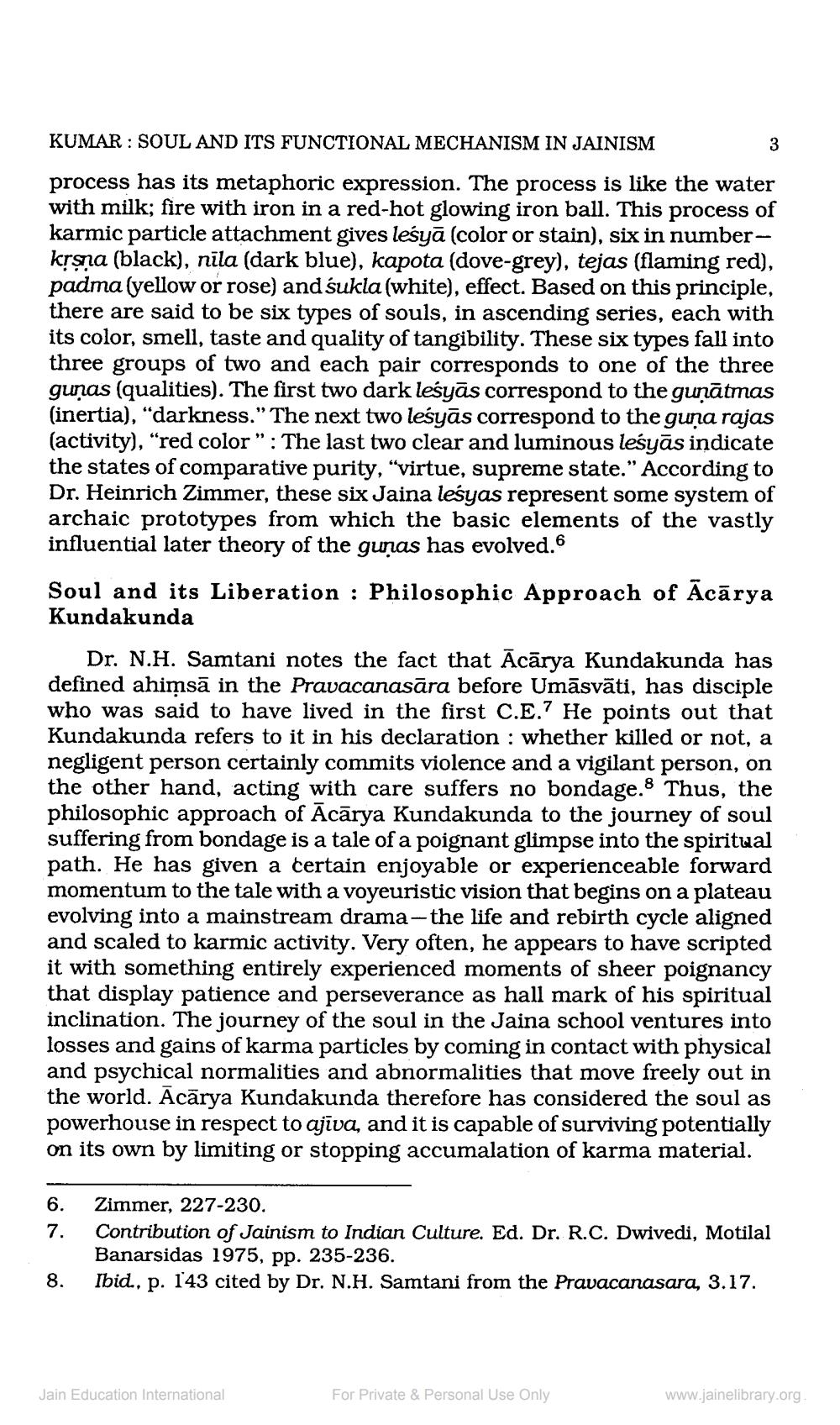________________
KUMAR SOUL AND ITS FUNCTIONAL MECHANISM IN JAINISM
process has its metaphoric expression. The process is like the water with milk; fire with iron in a red-hot glowing iron ball. This process of karmic particle attachment gives lesyā (color or stain), six in numberkṛṣṇa (black), nīla (dark blue), kapota (dove-grey), tejas (flaming red), padma (yellow or rose) and sukla (white), effect. Based on this principle, there are said to be six types of souls, in ascending series, each with its color, smell, taste and quality of tangibility. These six types fall into three groups of two and each pair corresponds to one of the three gunas (qualities). The first two dark lesyās correspond to the guṇātmas (inertia), "darkness." The next two lesyās correspond to the guna rajas (activity), "red color": The last two clear and luminous lesyās indicate the states of comparative purity, "virtue, supreme state." According to Dr. Heinrich Zimmer, these six Jaina lesyas represent some system of archaic prototypes from which the basic elements of the vastly influential later theory of the gunas has evolved.6
Soul and its Liberation: Philosophic Approach of Acārya Kundakunda
Dr. N.H. Samtani notes the fact that Acārya Kundakunda has defined ahimsā in the Pravacanasāra before Umāsväti, has disciple who was said to have lived in the first C.E.7 He points out that Kundakunda refers to it in his declaration : whether killed or not, a negligent person certainly commits violence and a vigilant person, on the other hand, acting with care suffers no bondage. Thus, the philosophic approach of Acarya Kundakunda to the journey of soul suffering from bondage is a tale of a poignant glimpse into the spiritual path. He has given a certain enjoyable or experienceable forward momentum to the tale with a voyeuristic vision that begins on a plateau evolving into a mainstream drama-the life and rebirth cycle aligned and scaled to karmic activity. Very often, he appears to have scripted it with something entirely experienced moments of sheer poignancy that display patience and perseverance as hall mark of his spiritual inclination. The journey of the soul in the Jaina school ventures into losses and gains of karma particles by coming in contact with physical and psychical normalities and abnormalities that move freely out in the world. Acārya Kundakunda therefore has considered the soul as powerhouse in respect to ajiva, and it is capable of surviving potentially on its own by limiting or stopping accumalation of karma material.
6.
7.
8.
3
Zimmer, 227-230.
Contribution of Jainism to Indian Culture. Ed. Dr. R.C. Dwivedi, Motilal Banarsidas 1975, pp. 235-236.
Ibid., p. 143 cited by Dr. N.H. Samtani from the Pravacanasara, 3.17.
Jain Education International
For Private & Personal Use Only
www.jainelibrary.org




